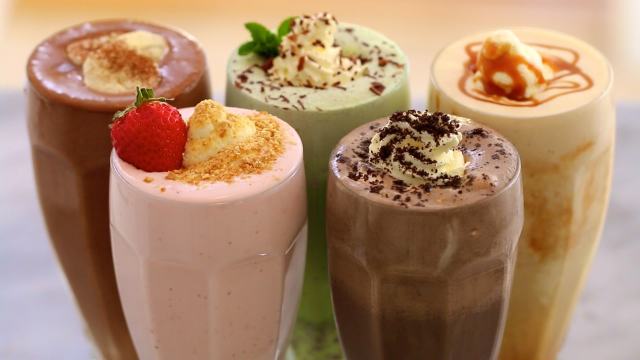When the term "milkshake" was first used in print in 1885, milkshakes were an alcoholic whiskey drink that has been described as a sturdy, healthful eggnog type of drink, with eggs, whiskey, etc., served as a tonic as well as a treat. However, by 1900, the term referred to "wholesome drinks made with chocolate, strawberry, or vanilla syrups. By the "early 1900s people were asking for the new treat, often with ice cream. By the 1930s, milkshakes were a popular drink at malt shops, which were the typical soda fountain of the period used by students as a meeting place.
The history of the electric blender, malted milk drinks, and milkshakes are interconnected. Before the widespread availability of electric blenders, milkshake-type drinks were more like eggnog, or they were a hand-shaken mixture of crushed ice and milk, sugar, and flavorings. Hamilton Beach introduced its Cyclone Drink Mixer in 1910, and it was widely used in soda fountains.
The Hamilton Beach design, with the motor on top, remains the most common kind of milkshake machine. In 1922, Steven Poplawski invented the bottom-motor blender, which is sometimes used for making milkshakes. With the invention of the blender, milkshakes began to take their modern, whipped, aerated, and frothy form.
The use of malted milk powder in milkshakes was popularized in the US by the Chicago drugstore chain Walgreens. Malted milk powder — a mixture of evaporated milk, malted barley, and wheat flour – had been invented by William Horlick in 1897 for use as an easily digested restorative health drink for disabled people and children, and as an infant's food. However, healthy people soon began drinking beverages made with malted milk simply for the taste, and malted milk beverages containing milk, chocolate syrup, and malt powder became a standard offering at soda fountains.

